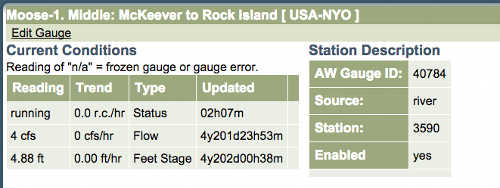The rating method for whitewater paddling gives a rapid a number between I and IV
(1 and 6) based on its difficulty and danger. Class I is a few waves and ripples, but not much
maneuvering is necessary. Class II is medium sized waves with channels (clean slots for a
paddler to shoot through) that don’t require scouting, but do require a bit more knowledge
of strokes. Class III requires more complex maneuvering on a faster current, and paddlers
may need to scout the rapid to find a good route through the waves. Class IV has more
dangerous obstacles that might be unavoidable, so only paddlers who feel confident in their
safety skills should attempt this rating and higher ratings. Class V is as difficult as IV but the
rapids are more sustained and more violent so it requires more strength and stamina. Class
VI is rarely paddled on and mistakes can be fatal. The river or section of river gets a rating
based on the collection of rapids, so a river with only one Class V rapid and many Class II
rapids will have a low rating. Running a Class V river is harder than running one Class V
rapid, because the river is a sustained challenge, there are many difficult rapids with few
breaks of flat‐water. When planning a whitewater trip, air and water temperature, as well
as remoteness of a river, should be considered because colder temperatures and more
remote locations add risk to any river (americanwhitewater.org).
When I go on Aw's website, I search for the rivers I usually paddle, like the Moose River
and it will tell me how high the river is running at that very moment, with the information
from the gauges. I can compare the hieght of the river to heights that I've run the river
on in the past and get an idea of how challenged I will be.
"Safety Code of American Whitewater." American Whitewater. Web. 24 Feb. 2015
Here is the AW website


